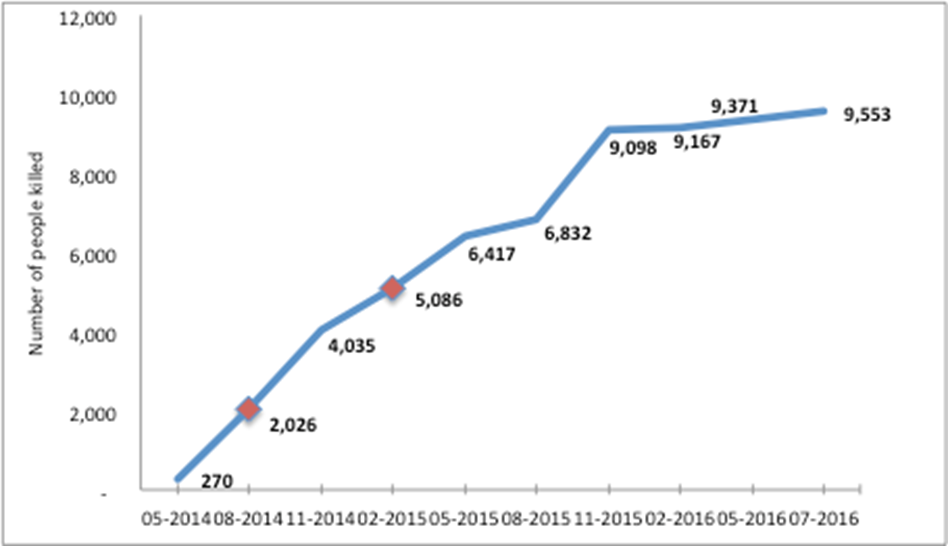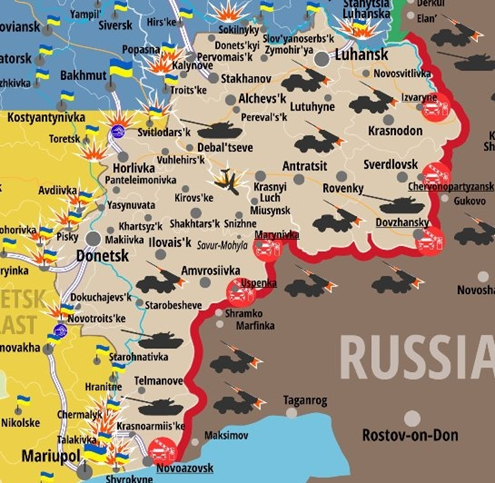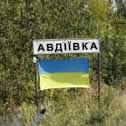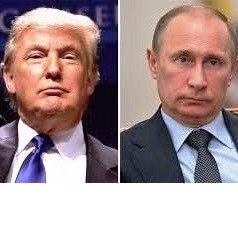(PONARS Policy Memo) Signed in February 2015, the Minsk II ceasefire accord strengthened the original protocol provisions to grant partial sovereignty (“special status”) to the self-proclaimed, Russia-backed governments of the Donetsk and Luhansk People’s Republics (DNR, LNR). Minsk II was inked at the same time that Russia’s regular, irregular, and mercenary forces exploited Kyiv’s compliance with Minsk I (September 2014) to surround and brutally assault Ukrainian troops around Debaltseve.
Minsk II stipulates that Ukraine should change its constitution to allow for greater regional decentralization. It is a poisoned chalice for peace and stability in Ukraine, as follows:
► It contains the insidious implication that failure to grant special status to DNR/LNR is a major putative cause of the war in Donbas. This obfuscates the decisive role of Russia’s continuing hybrid military and political intervention in Ukraine.
► Decentralization is less and less realistic in light of DNR/LNR’s ongoing sovereignization of their territories, looking to join Russia, and demonizing the Ukrainian government.
► Implementation of the Minsk-mandated decentralization threatens the social and political stability in Ukraine and weakens its Westward geopolitical orientation.
From Russia with Trains, Trucks, and Death
According to the Office of the UN High Commissioner for Human Rights, the Donbas war claimed 31,690 casualties from mid-April 2014 through July 31, 2016, including 9,553 people killed. This means the death toll has nearly doubled (risen by 4,500) since the signing of Minsk II in February 2015. Even though the death toll’s pace slowed down from November 2015 through February 2016 (69 people were killed), it has picked up since then—204 deaths by the end of May 2016 and 182 deaths by the end of July 2016 (Figure 1).
Figure 1. Death Toll in Russia-Ukraine Donbas War (UN Data)
(Markers show the Minsk I and Minsk II ceasefire accords.)

The war grinds on and people continue to be killed and injured. The Ukrainian government reports dozens of attacks on its forces and several casualties daily along the ceasefire line, while the OSCE reports dozens of ceasefire violations, mostly without attribution to who initiated the use of force. Detailed reports by Andrew Kramer of The New York Times from the frontline near Avdiivka, just north of Donetsk, clearly shows a prevailing pattern of military action. Most attacks are initiated from the DNR/LNR side after dark, when the OSCE monitors stop patrolling the area. As the Ukrainian forces come under increasingly heavy automatic weapon and artillery fire, they respond in kind. Kramer noted the insistence by the Russians, not the Ukrainians, that OSCE monitors are not allowed to use binoculars.

The DNR/LNR attack capabilities come from Russia through the section of its border with Ukraine (that Ukraine no longer controls). Most shipments come by train, often in open flatcars. Not only has the international media reported on these shipments, but the separatist leaders have widely acknowledged them. This deadly equipment does not stay idle. Most recently, a spike in the number of attacks on Ukrainian positions in late July 2016 occurred after Ukraine’s defense ministry reported the arrival on July 19, 2016 of “thirty flatcars with tanks and self-propelled artillery, railcars with military servicemen, and tanks with fuel and lubricants” at the Donetsk-2 railway station; of ten tanks and 500 tons of diesel fuel at Khartzisk and six tanks with 300 tons of diesel fuel as well as “two self-propelled artillery systems, three 122mm MLRS Grad launchers and two APCs.” (Map source: Mediarnbo, accessed 1/23/2017)
Preceding this spike in violence in Donbas was the arrival of the 54th convoy carrying 750 metric tons of unverified cargo on July 16, 2016. Numbering between around 100 and 200 KAMAZ military trucks repainted white, these convoys have been regularly coming into Donbas since August 2014 without Ukraine’s government ability to inspect them on the way in or out. Neither Minsk I nor II stopped these shipments (nor the associated death tolls once the trucks’ cargo was delivered and dispersed).
To Russia with Propaganda
A systematic review of the DNR and LNR official websites yields no indication that these entities intend to reach out to Kyiv and negotiate the re-integration of their separatist territories into Ukraine. On the contrary, Ukraine is systematically and egregiously demonized. This is exemplified by the DNR website page (at right) titled “Ukraine Kills Us” and showing pictures of local children. In the center of the page is the DNR map with the borders including the entire Donetsk Oblast—an implicit claim of DNR’s territorial aspirations.
These DNR/LNR websites try to institutionalize their sovereignty implicitly and explicitly with daily flows of reports legitimatizing their activities as providing security and social services and the dissemination of the approved sovereign symbols (flags, coats of arms, and anthems). The lyrics of the DNR anthem strongly suggest that its sovereignization is a path toward Russia, not Ukraine. Its anthem refers to the DNR as “Donetsk-Russia (Donetskaya Rus’) … a holy state of the people.” It does not refer to, say, “Donetsk-New Ukraine” or “Donetsk-the Other Ukraine.” In the same vein, the LNR anthem promises: “And so the power of the people will be sanctified. In one single and strong Union. In it will be brotherhood, valor, and freedom. And the holy glorious Russia.”
The DNR and LNR websites have no Ukrainian language versions. Neither Minsk I nor Minsk II mandated the DNR and LNR leadership to undertake measures to integrate with Ukraine, just as the government in Kyiv was mandated to reform its constitution and decentralize. This is a glaring and woeful asymmetry.
Into Ukraine with Tension
In addition to being unfair in principle and allowing Russia to obfuscate the decisive role of its military intervention in the Donbas war, the asymmetry of mandates favoring decentralization over integration gradually destabilizes Ukraine’s society and politics.
Recent survey data point to perils from the poisoned chalice of the Minsk protocols. The three main ones are outlined below. Mink increases political divisiveness along regional and language lines and fragments Ukraine’s pro-European party coalition. The data come from the annual nationwide Omnibus surveys conducted by the Institute of Sociology of Ukraine’s National Academy of Sciences. The surveys are based on multi-stage probability samples of about 1,800 respondents age 18 and older in all provinces of Ukraine, including the Donetsk and Luhansk Oblasts under government control, but excluding DNR, LNR, and Crimea. The margin of sampling error is less than 2.5 percent.
Regional Divides
Following Minsk II, the Omnibus surveys in July 2015 and July 2016 asked two questions about respondents’ policy preferences regarding DNR and LNR. Regional differences, though clearly present in 2015, have increased markedly, showing the divisiveness of the issue.
► Support for continuing military operations to regain the DNR/LNR occupied territories changed little in the West, Center, and South of Ukraine (all within the combined sampling error margin), but dropped sharply in the East (from 16.4 percent of those who answered the question to 9.5 percent) and in Donbas (from 22.2 to 1.2 percent) (Table 1). Based on the data in 2015, residents in the West were about 50 percent more likely to support military action than residents in Donbas—but in 2016 it was about 3,000 percent, or 30 times, more likely.
► Support for granting DNR and LNR “partial sovereignty” and conducting talks on their “special status” within Ukraine stayed unchanged in the West, Center, and South, but skyrocketed in the East (29.6 to 45.2 percent) and in Donbas (40.7 to 73.3 percent). Even though about 30 percent of respondents gave no answer, changes of such magnitude are unlikely to be due to chance or sampling flaws. In 2015, an average resident of West Ukraine regions was about four times less likely to support partial independence of the DNR/LNR than an average resident in the East and more than five times less likely than an average resident of the government-controlled Donbas. In 2016, these gaps widened to five times and nine times, respectively (Table 1).
► The polls also show that if a referendum were held in Ukraine, the share of respondents supporting DNR/LNR autonomy would have dropped more than twofold in Ukraine’s West and by almost one fifth in the center, but increased by about one fifth in Donbas from 2015 to 2016 (Table 2). The gap between the West and Donbas on this issue thus widened almost twofold (from 30 to 55 percent).
Table 1.

Table 2.

Notes for Tables 1 and 2: WEST: Volyn, Zakarpatt’ya, Ivano-Frankivsk, Lviv, Rivne, Ternopil, Chernivtsi. N=375 (2015); N=377 (2016). CENTER: Vinnytsya, Zhytomyr, Kyiv Oblast & City, Kirovohrad, Poltava, Sumy, Khmelnytsk, Cherkasy, Chernigiv. N=661 (2015) N=660 (2016). SOUTH: Mykolaiv, Odesa, Kherson. N=193 (2015 and 2016). EAST: Dnipropetrovsk, Zaporizhzhya, Kharkiv. N=407 (2015); N=406 (2016). DONBAS: Donetsk, Luhansk (government controlled). N=166 (2015 and 2016).
Identity Fissures
Differences between Ukrainian and Russian language users also sharpened over the same questions of DNR/LNR status and conflict resolution options. This is particularly evident in looking at the differences between respondents who completed the surveys in Ukrainian and those who completed them in Russian.
► Among respondents opting for Russian, support for granting DNR/LNR partial independence (“special status”) increased significantly, from 31 percent in 2015 to 44 percent in 2016. Among respondents opting for Ukrainian, it stayed at about the same level, 19 percent in 2015 and 18 percent in 2015. The gap between the two groups widened more than twofold, from 12 to 26 percent.
► In a hypothetical referendum, support for granting DNR/LNR autonomy within Ukraine dropped from 34 to 20 percent among Ukrainian speakers, but remained unchanged among the Russian speakers in the surveys (at about 45 percent). The gap widened from 9 to 25 percent.
► Showing a deviation from the regional patterns (Table 1), differences in support for continuing military operations to regain Donbas have not changed significantly from 2015 to 2016 across linguistic lines—amounting to 31 and 27 percent, respectively, among Ukrainian users and 19 and 15 percent among Russian users.
Logistic regression tests—analyzing preferences at the individual level—show that regional and language use differences contributed independently to support for DNR/LNR special status or autonomy. In other words, language differences matter regardless of whether a majority of a region’s residents speak Ukrainian or Russian.
Political Center Split
Mass protests in front of Ukraine’s parliament (Verkhovna Rada) left three people dead and scores injured in September 2015. The upheaval was in response to the parliament passing the first draft of the law on decentralization that attempted to meet Minsk II provisions. Right there, Minsk showed its destabilizing impacts on Ukrainian society and polity. Those impacts are more insidious and strike at the core of Ukraine’s post-Euromaidan government.
Parliamentary political systems such as Ukraine’s are prone to fragmentation by design and often resemble a cauldron of chaotically competing ambitions. President Petro Poroshenko’s effort to pass the laws on decentralization (which includes a law on the special status of Donbas territories under DNR and LNR control) are not helping mitigate discord. Moreover, they contribute to a serious split within the original Euromaidan coalition of parties through shifting political fortunes of the supporters and opponents of decentralization laws.
Table 3 makes this point evident. The Euromaidan coalition parties that currently have nearly 60 percent voting share of Ukraine’s Rada but cast 50 percent or higher vote for the draft decentralization law in August 2015 (Petro Poroshenko Bloc, Revival, and National Front) have seen their electoral fortunes plummet into low single digits in the July 2016 Omnibus poll. By contrast, the three pro-Europe parties that opposed the decentralization law (Fatherland, Self-Reliance, and the Radical Party) have seen their electoral fortunes rise. If elections were held this past summer, Yulia Tymoshenko’s Fatherland party would get the largest share of the vote (13.2 percent). The three anti-decentralization parties would gain close to 30 percent of the popular vote. The three pro-decentralization parties would gain just 7 percent of the total vote.
Table 3. Decentralization Law Process Undermines Pro-Western Majority Coalition

Notes: *Percent of party deputies casting a yes vote for the decentralization law in August 2015. **Voting share in the Rada in mid-2016. ***Respondents who would vote for the party if elections were held at survey time in July 2016.
Assessment and Implications
If Moscow intended to use the Minsk ceasefire framework to foster Ukraine’s decentralization, obfuscate its military intervention, make the West forget about Russia’s annexation of Crimea, and destabilize Ukraine, it has been working well. If the accords were designed to stop killings and reintegrate Donbas into Ukraine, they have squarely failed. Whereas the Minsk agreements probably succeeded (so far) in constraining Russia’s military interventions outside Donbas, its decentralization provisions gradually erode those constraints.
What could the United States and the EU do? First and foremost, based on this analysis, the review of sanctions on Russia should not be contingent on Ukraine’s constitutional reform as mandated currently by Minsk II. Moreover, considering Moscow’s continuing military support for the DNR/LNR, deadly attacks on Ukrainian forces, and the lack of DNR/LNR moves toward integration with Ukraine, the sanctions should be increased significantly. The review should be primarily contingent on Russia’s military intervention and a return of border control to Ukraine. After all, Moscow can still bring peace to Donbas with Russian President Vladimir Putin calling off the troops and making one televised statement saying no military or economic support will be forthcoming to the DNR/LNR unless they acknowledge Ukraine’s sovereignty. Absent that, the United States needs to participate more actively in the ceasefire process and monitoring—if only by dint of being the only global actor whose military capabilities are superior to Russia’s. Europe lacks the military power to have diplomatic clout with the Kremlin. The illegal seizure of Crimea and the violation of the Budapest Memorandums must also not be disregarded by the West.
A profound reform of Minsk or its replacement with another framework is urgently needed to stop the loss of life and Ukraine’s destabilization. One option is to separate the Minsk protocols into two distinct components: military and political. Another option is to dispose of the Minsk agreements altogether and recognize that including Russia in ceasefire negotiations is as detrimental to the process as treating an arsonist as a firefighter. The United States and the EU need a new framework clearly emphasizing the need for collective security to contain Russia’s aggression in Ukraine (and possibly elsewhere). The poison in the Minsk II chalice is strong; it is vital to stop ingesting it.
Mikhail Alexseev is Professor of Political Science at San Diego State University.
[PDF]











